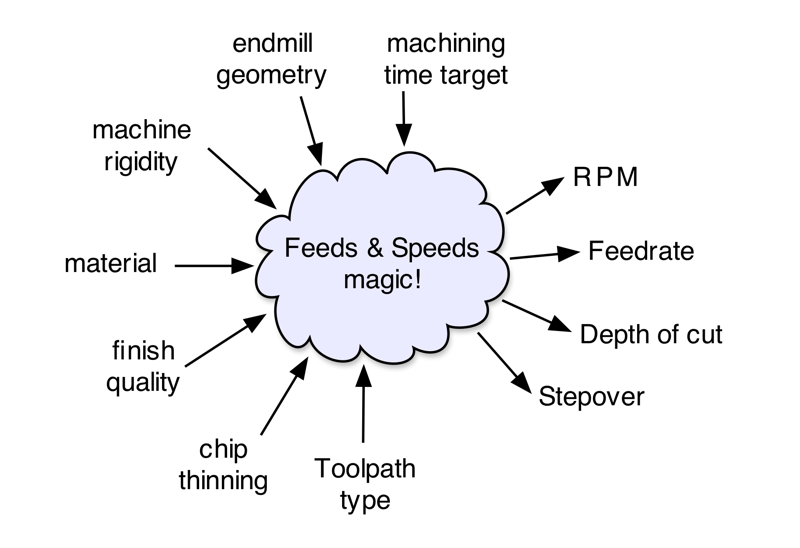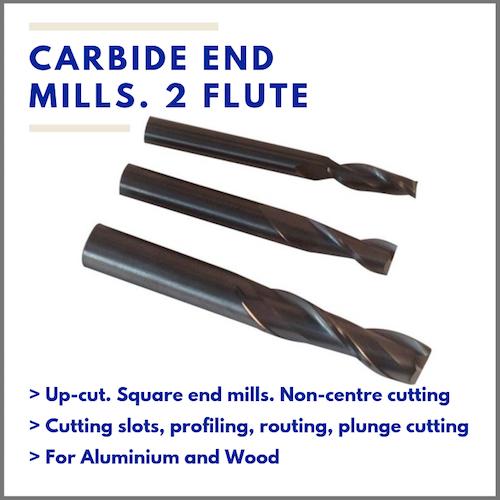
Coated Tools: NONFERROUS MATERIALS: Aluminum + Aluminum Alloys 2024-T4/T6, 2014, 6061-T6/T651, 7075-T6. SFM = 0.8 X Highest Speed Range. Feed should be 0.5 X. High-Speed Steel T-Slot End Mills Use these end mills for general purpose work in most material, such as aluminum, brass, bronze, iron, and steel. They're often used to create slots in machine tool tables, indexing tables, and other workholding surfaces.
Find T-Slot Cutters at MSC Industrial Supply, serving the metalworking, safety, and MRO industries for over 75 years. High Speed Steel T-Slot Cutter 17/64' Neck. T-Slot Cutter; Threading & Grooving. Solid Carbide End Mill Speed & Feed: 2 Flute, 3 Flute 45 Helix for Aluminum, 3 Flute 30 & 60 Helix, 5 Flute 45 Helix Solid. Cutting Speed: fpm (100-300 fpm) End Mill Diameter. Feed Rate: ipm SPECIAL OF THE WEEK: $14.95. More information: Electronic Digital Caliper, 6'.
Wishing you all a Merry Christmas and a Happy and New Year.
Due to public holidays, there may be some minor delays in processing and receiving orders over the holiday period.

There are certain parameters that must be considered, before setting up any file for cutting if you are to accomplish the finish and accuracy required. One of the most important of these factors is the Chipload per Tooth (Cpt). Chipload can be defined as the size or thickness of the chip that is removed with each flute per revolution.
When material is machined the cutter must revolve at a specific RPM and feed at a specific feedrate to achieve the proper Chipload. There are also several factors to be considered when choosing the proper RPM and feedrate.
The feed rate used depends upon a variety of factors, including power and rigidity of the machine, rigidity of part hold-down, spindle horsepower, depth and width of cut, sharpness of cutting tool, design and type of cutter, and the material being cut.
To obtain the optimum Chipload, you must consider these variables, along with the machine and materials you intend to cut. This will help you find the best feed rate and RPM for any given tool and material.
One thing to remember is to make chips not dust. Chips will help by removing the heat produced in the cutting process thus increasing tool life and improving edge quality. Feeds and speeds are usually all set in the programming software that is used to create the machine program. There are many resources available to help determine suitable settings for particular material / router bit combinations.
These often provide a good starting point but can usually be further improved through a small amount of trial and error. Most machine controllers allow you to adjust the feed rate while a program is running and by listening to the sound the cutter makes this can be a good way of optimizing the parameters.
Feed rate is calculated using the following equation:
Feed = N x T x Z
N = number of cutting edges (flutes)
T= chip load (chip per tooth) is the amount of material, which should be removed by each tooth of the cutter as it rotates and advances into the work. (mm per tooth)
Z= RPM, the speed at which the cutter revolves in the spindle. (Revolutions per minute)
We will now break down the relationship between the Feed rates, number of cutting edges, chip load and RPM. For most materials there is a recommended chip load.
If you are running at 18000 RPM using a 25mm cutter with two flutes, and a recommended chip load of 0.1 mm/tooth:
Feed = 2 x 0.1 x 18000 = 3600 mm per min
If the RPM were increased to 24000 RPM the new feed rate would work out to be:
Feed = 2 x 0.1 x 24000 = 4800 mm per min
Based on this equation, as RPM increases, feed rate will also increase if all other settings remain the same. If the number of cutting edges changes, however the feed rate will either increase or decrease depending on the whether the number goes up or down. The same applies to chip load if the recommended chip load is 0.1 mm/tooth the RPM, feed or number of cutting edges may go up or down to maintain the required chip load. Therefore if chip load remains the same, and feed rate increases, either the RPM and or number of cutting edges must increase to maintain the recommended chip load.
When calculating the feed rate for any material the chip load is therefore one of the most important factors to be taken into account because the chip load determines the amount of material that each tooth will remove, plus the load that each tooth will have to take. Another factor that affects chip load is the diameter of the cutter. A larger cutter will be able to handle a larger chip load.
| No of cutting edges (Z) | Chip Thickness (mm) | Feed rate (mm/min) at RPM | ||
| 18000 | 21000 | 24000 | ||
| 1 | 0.1 | 1800 | 2100 | 2400 |
| 2 | 0.1 | 3600 | 4200 | 4800 |
| 3 | 0.1 | 5400 | 6300 | 7200 |
| 1 | 0.4 | 7200 | 8400 | 9600 |
| 2 | 0.4 | 14400 | 16800 | 19200 |
| 3 | 0.4 | 21600 | 25200 | 28800 |
Therefore depending on the diameter of the tool, if the RPM and number of cutter edges stay the same chip load will increase with a larger diameter cutter, thus the feed rate will also increase. When machining softer materials or using a stubby router bit the chip load can be increased. If an extra long router bit is being used, the chip load should be decreased.
For most material that you will be cutting on a CNC router you will typically set the RPM between 12000 and 24000, and adjust your feed rate to obtain the required results. The speeds and feeds chosen can be affected by the power of the spindle being used. Higher power spindles will produce more torque thus allowing the machine to run at a variety of RPM’s (torque drops off as the RPM is reduced).
Typical chip thickness values for various size cutters | ||||||
Cutter Diameter | Hardwood | Softwood/Ply | MDF/Particleboard | Soft Plastic | Hard Plastic | Aluminium |
| 3mm | .08 -.13 | .1 - .15 | .1 - .18 | .1 - .15 | .15 - .2 | .05 - .1 |
| 6mm | .23 - .28 | .28 - .33 | .33 - .41 | .2 - .3 | .25 - .3 | .08 - .15 |
| 10mm | .38 - .46 | .43 - .51 | .51 - .58 | .2 - .3 | .25 - .3 | .1 - .2 |
| 12mm and over | .48 - .53 | .53 - .58 | .64 - .69 | .25 - .36 | .3 - .41 | .2 - .25 |
Even though there are formulas for calculating feed rates you will find that optimum feed rate will be determined from experience. You will typically start off with the calculated feed rate. Under ideal conditions it is usually suggested that the actual feed rate be set to approximately one-half the calculated amount and gradually increased to the capacity of the machine and the finish desired.
Once you have determined what feed and speed to start with, there are other factors to be taken into consideration. The next thing to be considered is the direction of cut, which is the direction the cutter is fed into the material. Conventional milling or cutting forward is the most commonly used method. With this method the work is fed against the rotation direction of the cutter. The other method is climb milling or cutting reverse. For this machining method the workpiece and the machine must be rigid. When machining non-ferrous materials, climb milling should be used to achieve a good finish.
Another factor is depth of cut. Depth of cut will effect edge finish as well as tool life. You will have to adjust your depth to achieve the desired results depending on the type of material and size of cutter. Usually a depth of cut that equals the radius of the cutter is a good starting point when cutting non-ferrous metals.

The Do’s and Don’ts

Do …
T Slot Cutter Speeds And Feeds Aluminum Steel
- Make sure you have the right router bit for the material to be processed
- Look up recommended settings when programming for a new type of material of router bit
T Slot Cutter Speeds And Feeds Aluminum Foil
- Check with your machine supplier if you aren’t achieving the expected quality or productivity

- Make sure your collet is not worn and the tool is fitted correctly
T Slot Cutter Speeds And Feeds Aluminum Extrusions
- Start with lower feed and plunge rates if not sure to avoid potential tool breakage or machine damage
T Slot Cutter Speeds And Feeds Aluminum Extrusion
Don’t …
- Forget that doing some test cuts on a spare piece of material is a good way of checking settings before running your main program
- Use worn or damage router bits which can cause overheating and poor cut quality
- Continue cutting if you hear an unusual cutting noise.
- Pause the machine and check the router bit and settings
- Cut too deep in a single pass. Sometimes it can be more efficient to use a higher feed rate and two or more passes rather than a single cut at a low feed rate